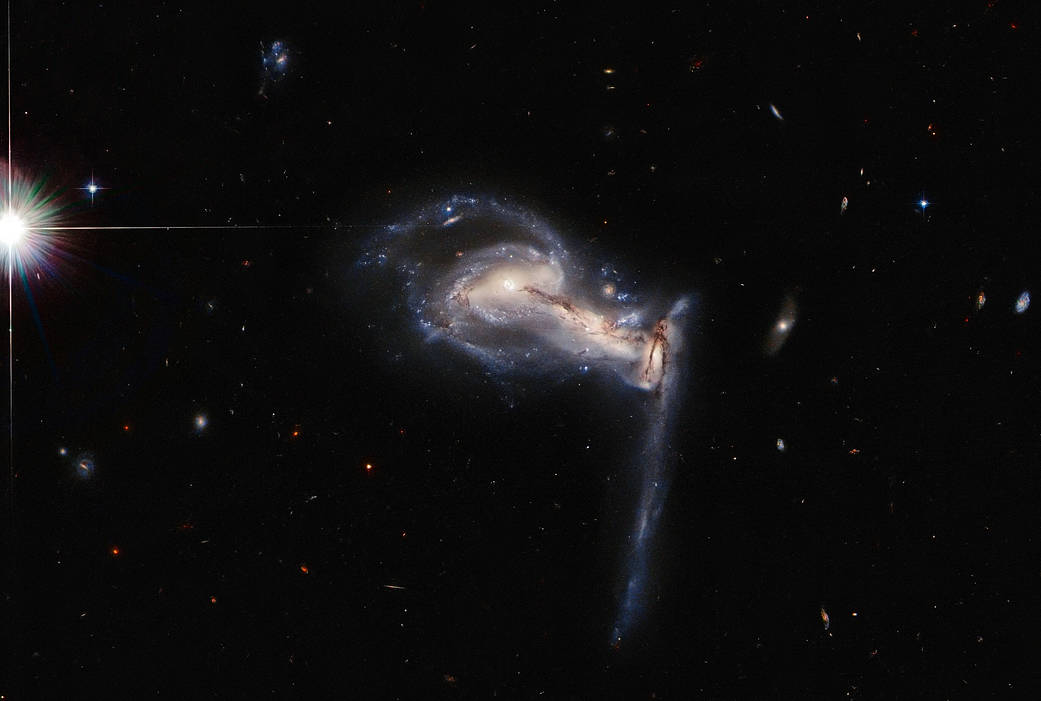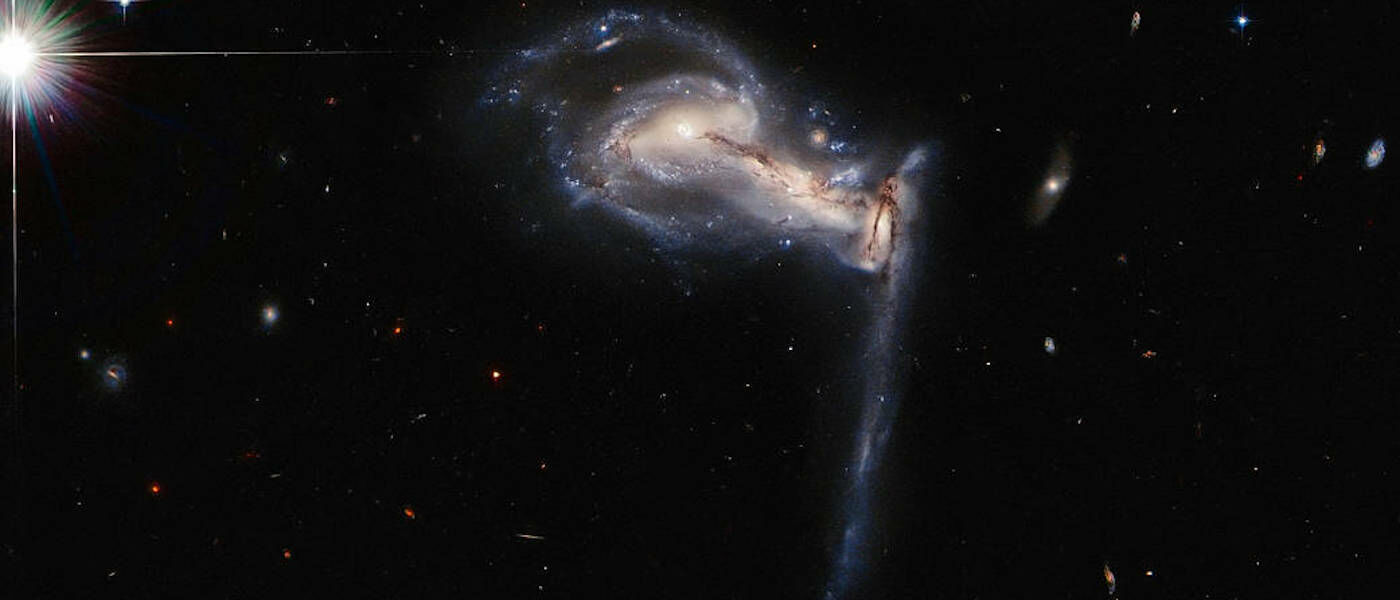A new photo from Hubble shows three galaxies crashing into each other!

After a five-week break, the Hubble Space Telescope came back online to capture this incredible image of three galaxies crashing into each other.

This particular trio has already been known collectively as Arp 195 – and the new image will help us better understand the weird interaction between these three galaxies!
Galaxies crashing into each other take a very long time to do so – millions of years or longer. The galaxies are moving so slowly that to us it looks like they’re standing still. If we could speed it up, we’d see the galaxies pulling on each other with gravity. Stars would be pulled off of their galaxies; each galaxy in its entirety would be stretched out towards the other. Eventually, the galaxies would be fully pulled into the other and they’d likely merge into one big galaxy. The three galaxies in this image are caught in the act of doing just that!
If any of the stars in those galaxies have planets, and if those planets have life, don’t worry about the safety of those hypothetical lifeforms – there won’t be any stars crashing into stars or planets crashing into planets during this process. The stars in each galaxy are so far apart that they’d just pass harmlessly between each other.
We also see this happening with pairs of galaxies like the Antennae Galaxies, which are merging into one, and our own Milky Way will also eventually merge with Andromeda in the distant future. But this particular instance is unusual in that there are three galaxies involved – meaning it’s a three-way tug-of-war as all three galaxies pull each star in three different directions. This will likely lead to an interesting mess as the three galaxies pull each other apart. Because of the uniqueness of this situation, Arp 195 is part of the Atlas of Peculiar Galaxies, a catalog of unusual and interesting scenarios like this one.
Spectacular as this image is, it’s actually a bonus. Hubble’s time is valuable, since there’s only one of it and scientists all over the world want to use it to observe different parts of the universe. So Hubble now uses an AI algorithm to plan out its time. Because of that good planning, Hubble had some extra time in its schedule to capture an extra image, which ended up being this one of Arp 195.
And extra images like this one can help researchers find places to look for more discoveries in the future with more advanced telescopes, like the James Webb Space Telescope, which is set to launch this November.
Interested in more space stories like this one? Catch a show in LSC’s Jennifer Chalsty Planetarium, the biggest planetarium in America. Click here to see what’s playing now and get showtimes.
